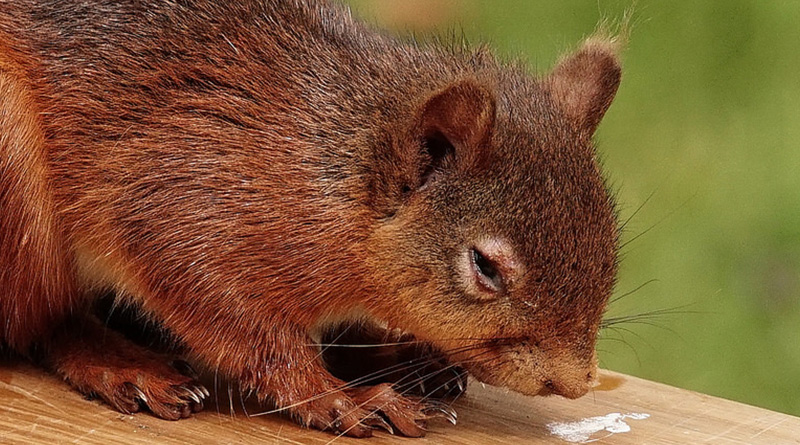Explained: Why red squirrels could be extinct in the UK in 10 years
With no more than 150,000 left of the rapidly declining species, red squirrels are one of the most endangered animals native to the UK today.
But with huge numbers across Europe and the rest of the planet, what has led to their dramatic decrease on our island? Facing constant and deadly threats, Joe Harbert investigates why this beautiful species is at risk of being extinct here in just ten years.
Competition with grey squirrels has caused most problems
Since their introduction to the UK 150 years ago from America, grey squirrels are the biggest reason why red squirrel numbers are consistently falling. Bigger, stronger and now with around two million in number, they dominate the native red species in every area. Their bigger size and growing numbers mean that they inherit food sources first, as well as habitats like woodlands and tree canopy’s.
With a larger appetite as well, their desire for food and prey often means they will even take existing food stored away by red squirrels, and this leads to numbers falling even further. With little food left to consume, red squirrels have been found to suffer from a great deal of stress, and with such a small breeding window to have kittens, their ability to even maintain colonies and existing numbers reduces too as they are always competing simply to stay alive.

The rivalry with grey squirrels can be deadly for reds. Credit: Peter Trimming
Viruses like Squirrel Pox
The rivalry between the two species increases further due to the fact that grey squirrels carry squirrelpox, a deadly disease that they are immune too, but red squirrels are not. Even more lethal than their physical and powerful stature, this virus is a huge reason for diminishing red figures. It takes only a tiny amount of contact for the virus to affect reds, and will wipe out numbers faster than any other threat grey squirrels or any other animals possess. Once infected, red squirrels will become lethargic as the disease causes a range of devastating symptoms including lesions and ulcers as it is believed to cause a 100% chance of death in less than a week.
Unfortunately, squirrelpox isn’t the only disease that reds have to try and avoid. The British Red Squirrel Project say that the species are susceptible to adenovirus, another virus that kills red squirrels almost immediately after contracting it: “Red squirrels are susceptible to other diseases and illness aside from SQPV. Adenovirus is a relatively recently identified threat, and it is an enteric virus. Reds show no outward signs of the disease; however, animals are often found dead. There is growing evidence that this disease may be introduced by rodents such as mice and rats, especially in the case of reds in captivity.”

Viruses like Squirrel Pox can kill reds within days
Credit: Peter Trimming
Habitat loss from deforestation and building of land
Constant and widespread deforestation has led to many habitats of the red squirrel being affected and destroyed. Humans cut down trees for agriculture or for new land, and the species suffer immensely from this. With their settlements in a host of forest and woodland, red squirrels are unable to adapt quickly and efficiently to compete with rival predators. By being exposed to more open areas, reds are often left unprotected and in danger of being prey to a host of other predators like large birds and foxes, meaning they have to kept out of the wild until they can be safely reintroduced.
By also having to constantly move location to live more sustainably, the increased open areas mean that squirrels are more likely to be affected by direct human-to-human contact. Over 40 million squirrels are killed in the USA each year by cars, and whilst this number is far lower in the UK with thousands rather than millions, it still explains a considerable percentage for their dropping numbers.

Deforestation has meant the species are constantly looking for a new home. Credit: Walter Baxter
Predators like birds of prey can find squirrels easy targets
The more vulnerable that red squirrels have become in their environment means they are at a much higher risk of being prey for a host of predators. Hawks, pine martens and magpies to name just a few target all species of squirrel, with many swooping in from the skies to take the species, especially more vulnerable kittens. Many colonies are destroyed due to these birds of prey, most notably in Wales and at the Isle of Wight where these birds are more prevalent as they find it easier to target more open areas.
Likewise, there are also predators like domestic pets, who although they don’t affect red squirrel numbers statistically as much as other factors, they can force the animals to move nests, as well as cause them a great amount of stress that prevents them from being able to breed and expand.

Animals like hawks are the main predator to reds. Credit: Mike Baird
